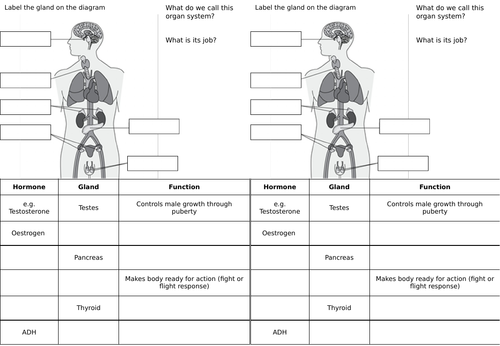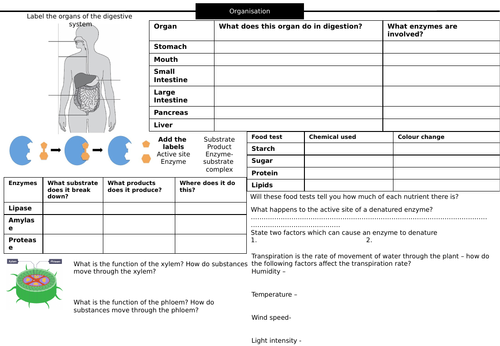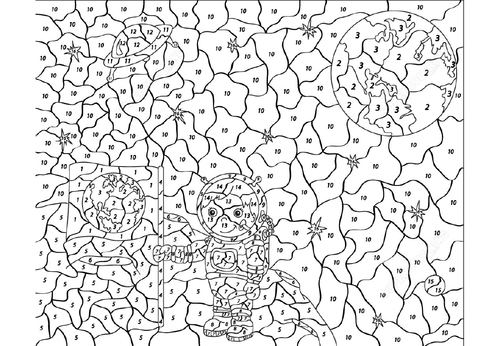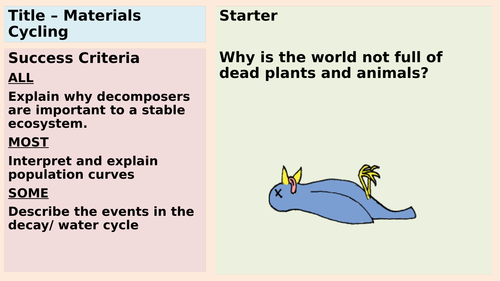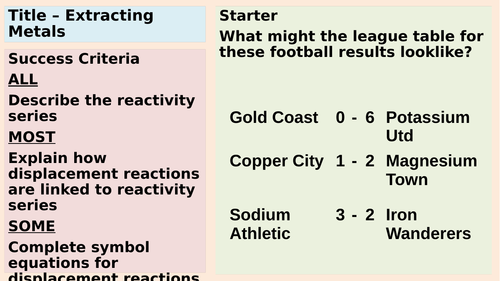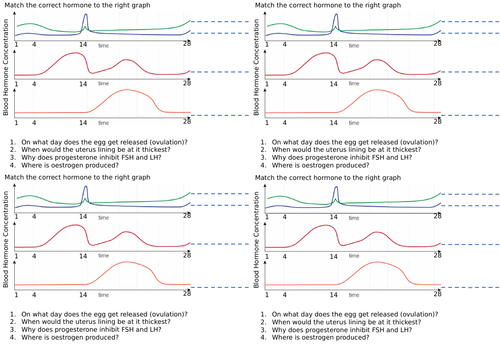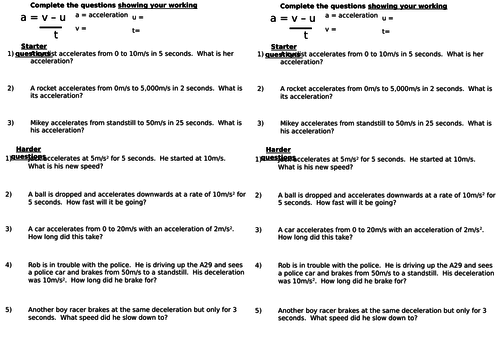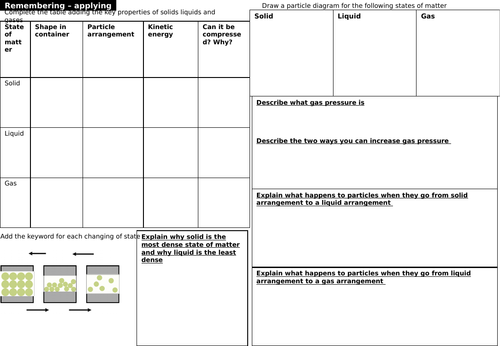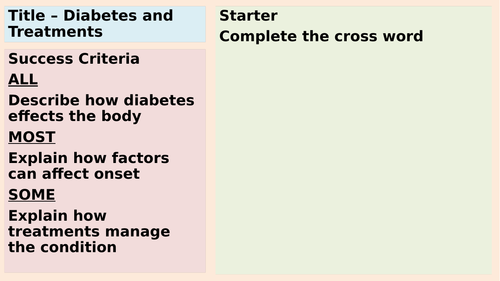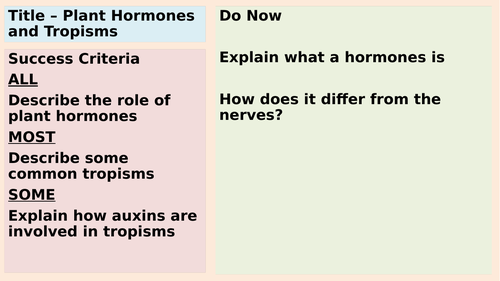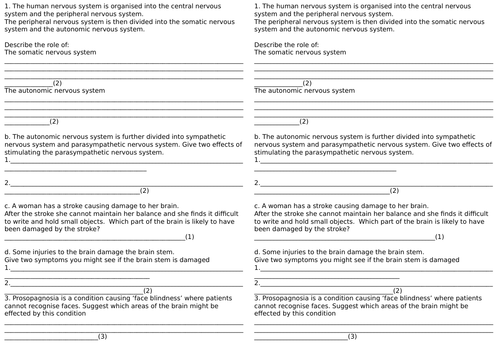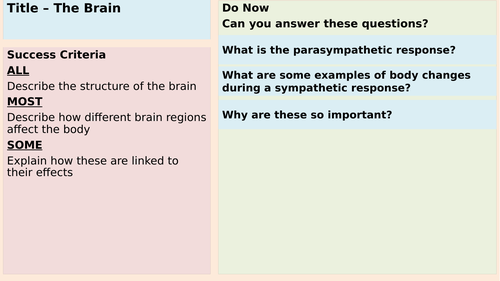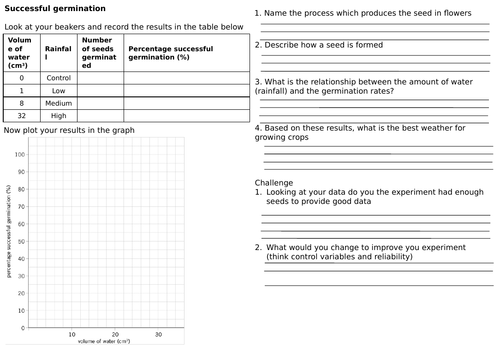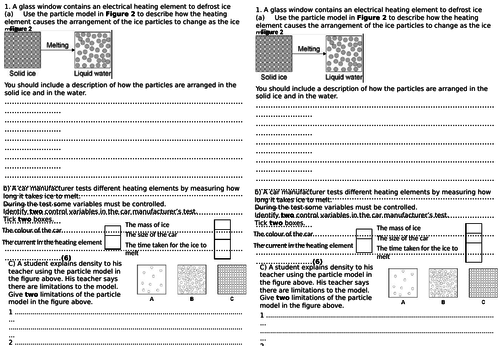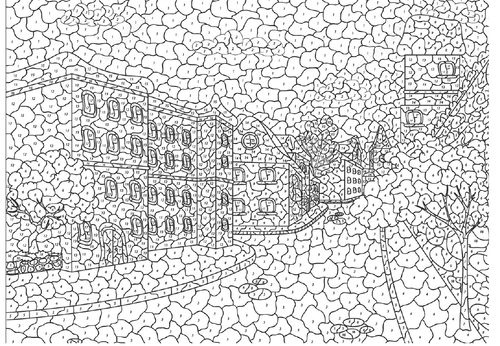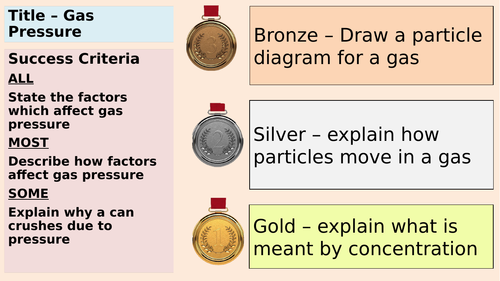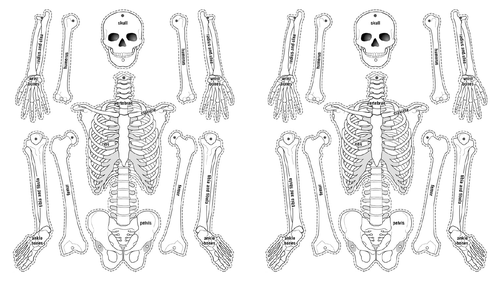
101Uploads
46k+Views
35k+Downloads

KS4 Electricity Colour By Numbers
Colour by numbers sheet in which students must answer questions based on the electricity module for Physics to get correct colour. Suitable for lower ability groups.

AQA Materials Recycling (detritivores and decomposers)
Lesson for AQA ecology on how materials are recycled - talks about types of material cycling and how detritivores and decomposers play a role. Includes tasks and questions throughout the presentation

Extraction of metals - electrolysis and smelting with carbon + practicals
A powerpoint for two lessons take students through the reactivity series and extraction of metals. It includes practical sheets for both smelting and electrolysis

AQA Hormones in Menstrual Cycle
Lesson which goes over which hormones are involved in the menstrual cycle and how they work. It includes tasks for students to complete plus a worksheet where they must identify the type of hormone based on the graph.

AQA GCSE Vectors and Scalars
A lesson covering definitions of vectors and scalars and how they can be added.
Lesson contains powerpoint with activities plus a leveled question sheet to test understanding.

AQA Acceleration lesson
Lesson which takes you through how to calculate the acceleration of an object with real life examples. Looks at both working out acceleration with time and without time
worksheet with questions

AQA Particle Model of Matter Module Revision Sheets
Revision sheets for AQA Density/Particle model of matter module. Covers all key concepts

AQA Resultant Force
A powerpoint for introducing the idea of resultant forces and force arrows. It includes a worksheet for students to work through. Answers on powerpoint.

AQA Diabetes and Treatments
A lesson looking at what diabetes is, what leads to the condition and how we treat it. Includes activities for identifying at risk individuals and factors which increase prevalence of diabetes. A starter crossword is designed to refresh ideas of the hormones which control blood glucose levels. Exam questions at the end to recap all work with answers on powerpoint.

AQA GCSE Dyanmic Equilibrium
A lesson covering AQA GCSE Dyanmic equilbrium - includes activities throughout to check understanding - follows on from reversible reactions

AQA GCSE Plant Tropisms and Auxins
A lesson which looks at Trophic responses in plants and how auxins are used to control phototropism and geotropism. Includes activities and detail on how this works.

Brain damage - AQA Applied Science Module 4
A lesson for AQA Applied Science Module 4 looking at the brain and brain damage. Includes a exam question sheet with answers on the powerpoint.

The Brain and brain areas - AQA Applied Science Module 4
A lesson for AQA Applied Science Module 4 looking at the brain and the brain areas. It looks at what each part is associated with.

KS3 Pollination, fertilisation and germination sucess rate (two lessons)
Two lessons which looks at how plants spread pollen. How a plant can form a seed and factors that affect seed germination. This includes a practical which takes place over two lessons. This is aided by the practical sheets students can use.

Organs and Organ systems
A lesson looking at some organs and what organ systems they fit into. Follow on lesson from lessons on levels of organization.
Includes info hunt task for organs

AQA Changes of State (two lessons)
AQA Changes of state, two lesson looking at how matter changes shape, identifying key terminology. Includes worksheet for practical where students attempt to find the melting point of stearic acid . Also includes exam questions with answers on powerpoint.

KS4 Atomic Physics (Radiation) colour by numbers (AQA)
A colour by numbers sheet where students must answer questions on the radiation portion of the atomic physics module for AQA. Suitable for most ability groups.

Gas Pressure AQA
Two lessons on gas pressure for AQA. Lesson on introduces the concept of gas pressure and factors which affect gas pressure.
Lesson two focuses more on Boyle’s Law with accompanying questions

KS3 Frequency and Amplitude from sound and light scheme
This is the lesson on identifying frequency and amplitude in waveforms from my sound and light module. If you like this lesson consider looking at the whole scheme.
The lesson looks at drawing waveforms, examples, how to identify the frequency and amplitude and how it relates to hearing.
Full scheme found here https://www.tes.com/teaching-resource/ks3-sound-and-light-full-scheme-of-work-resources-12263056

The Skeleton
Lesson looking at the structure and function of bones and the structure and function of the skeleton.
The cut out skeleton worksheet is not mine and comes from a pre-made resource but I have added it here for ease of access

